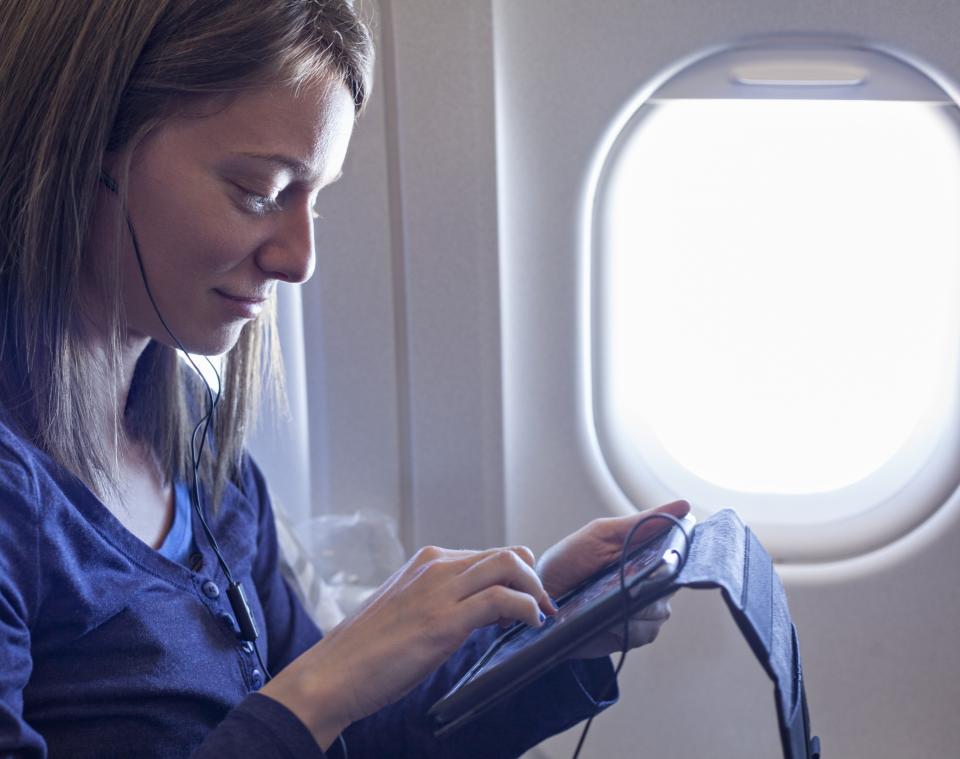The eight airlines that offer in-flight Wi-Fi for free

With in-flight Wi-Fi increasingly provided by airlines, more and more digital addicts are able to remain connected in the sky.
The budget-conscious among you will also be glad to know there are some carriers, though currently only a handful, that offer the service for free.
Norwegian, Europe’s third largest lowcost carrier, is one of them, offering free Wi-Fi on most of its flights in Europe as well as on flights between the US and the Caribbean, though it is not yet available on international long-haul flights.
Airlines that offer free in-flight Wi-Fi
Earlier this year, America’s JetBlue Airways became the first airline to offer free Wi-Fi on all of their aircraft for all flights. Its Fly-Fi service is available to passengers as soon as they board (while for most airlines it’s only available when the plane is at it cruising altitude) until it touches down at its destination.
But most of these free Wi-Fi services also come with restrictions, such as with Air China, China’s national carrier, whose service was upgraded back in 2014 and designed to provide a internet browsing speed of 20-30 megabytes per second (Mbps), but is currently only available on domestic flights and for use on laptops and tablets but not smartphones.
At a glance | In-flight Wi-Fi charges
The Shanghai-basedChina Eastern Airlines’ free Wi-Fi service (currently only so on a trial basis) can be used on smartphones, as well as laptops and tablets. But passengers are entitled to only 258 yuan (£30) worth of free Wi-Fi on selected domestic and international flights.
JetBlue’s Fly-Fi is available only on flights in the contiguous US region (that is, the mainland states, excluding Hawaii and Alaska and its off-shore territories) and “this coverage area does not necessarily guarantee service availability,” the airline notes.
How does Wi-Fi work at 35,000 feet
Thailand’s Nok Air currently provides free in-flight Wi-Fi on only two aircraft, offering a download speed of up to 8Mbps and upload speed of up to 768Kbps. Access to certain high bandwidth activities, including some audio and video streaming applications, is limited, according to the company.
Turkish Airlines offers free Wi-Fi on board its business class flights as well as to its Elite and Elite Plus members on its economy class flights.
Airports with free Wi-Fi: the worlds best
Dubai-based Emirates provides free Wi-Fi for the first 10MB of data usage, while Qatar Airways currently provides free Wi-Fi for the first 15 minutes of your flight, but further access must be purchased.
Until last month,Philippine Airlines boasted free on-board Wi-Fi for the first 30 minutes or first 15MB on a flight, but there are as yet no plans to extend this offer.
The high cost of Wi-Fi service in the air stems from all the technology required to provide service which doesn’t come cheap – and nor do the in-aircraft systems. Antennas also increase drag, adding fuel costs to the airline’s bill. Those fees – plus engineering and maintenance costs – are usually passed on to customers.
Airlines offering some of the most expensive in-flight Wi-Fi include Virgin Atlantic, which charges fliers around £14.99 ($22.30) per flight, while Wi-Fi on board a flight with the Altanta-based Delta Air Lines, a major US airline, will cost around £27 ($39.95) on a laptop or tablet and £20 ($29.95) on a mobile per flight.
American Airlines, the world’s largest airline, currently charges around £12.75 ($19) for Wi-Fi for per flight on international routes. Earlier this year it decided to scrap seat-back monitors on its new Boeing 737 Max aircraft – intended for domestic routes in the US – because most passengers travel with mobile phones, laptops and tablets.
Instead of investing in screens it will upgrade in-flight internet speed, to ensure passengers can browse the web and stream movies quickly. The airline has stated that seat-back screens will remain on its international routes.
UK airlines continue to lag behind in providing in-flight Wi-Fi but last year, BA announced plans to provide what it claims will be the fastest Wi-Fi internet connections on long-haul international flights, retro-fitting next generation satellite technology on 118 of its aircraft. Although the final details are still being worked out, the service, which was expected to be rolled out this year, is likely to be free to passengers in a basic form, with fees charged for premium services and connections.
Ryanair, Europe’s largest low-cost carrier, doesn’t provide an in-flight Wi-Fi service, while easyJet is reportedly looking tointroduce the service.
16 ways to feel like you’re in first class - when you’re actually flying economy
Communications firm Inmarsat is working with Deutsche Telekom to develop the European Aviation Network [EAN], a high-capacity satellite Wi-Fi network backed up by ground towers, which promises “a reliable high bandwidth broadband service in the air” throughout Europe.
“Over half of the world’s aircraft will be equipped for in-flight Wi-Fi within the next six years,” the firm claims. “It is set to become a billion-dollar revenue sector by 2020.”

 Yahoo Finance
Yahoo Finance 